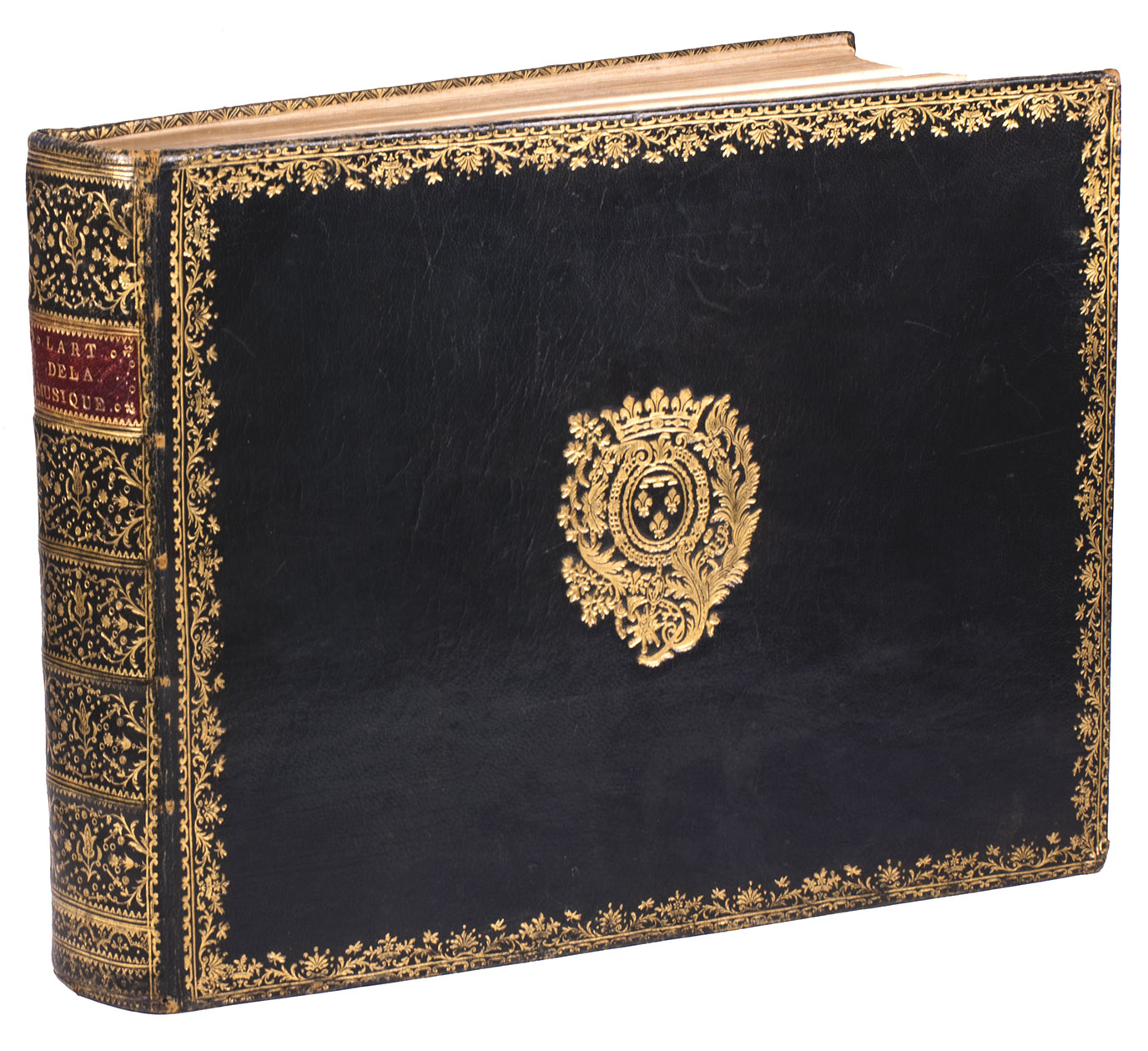[DUMAS, Antoine-Joseph].
L'art de la musique enseigné et pratiqué par la nouvelle methode du bureau typographique.
Paris, Sr. Auguste [for the author], [1753]. Large oblong 4to (26 x 33.5 cm). Wholly engraved, including an engraved title-page, two-page engraved dedication, a double-page folding engraved musical table ("Elémens de la musique. Plan général du bureau typographique musical") and 427 engraved text pages by Mademoiselle Vandôme. Contemporary gold-tooled dark green (goatskin) morocco, richly gold-tooled spine with red morocco title label, gold-tooled boards with the coat of arms of Louis-Philippe d'Orléans (1725-1785) on both sides, gold-tooled board edges and turn-ins, pink silk endleaves, gilt edges (attributed to Jean-Charles-Henri Lemonnier). [4], 12-427, [1 blank]; 11, [1 blank] pp.
€ 37,000
Dedication copy of the first and only edition of a beautiful, wholly engraved music guide by Antoine-Joseph Dumas (1705 - ca. 1785), the son of teacher and musician Louis Dumas (1676-1744). The present copy comes from the library of the dedicatee Louis-Philippe d'Orléans (1725-1785) and has his arms on its attractive gold-tooled binding. Although the binding is not signed, it was very likely made by Jean-Charles-Henri Lemonnier, documented as bookbinder to the Duc d'Orléans in 1759.
The work explains a method of teaching music based on the "bureau typographique" (the typographic office), a visual and mnemonic game that Louis Dumas had invented earlier, in the 1730's, to teach children French and Latin. Based on this scheme, L'art de la musique proposes and explains the principles of music according to three divisions. The first covers solfège and the interrelation of notes and keys. The second presents a three octave range and melodic transpositions for vocal and instrumental students. The third prescriptively elaborates the preceding section in detail. The whole system is based on a unified clef and simplified notation.
A few leaves with some faint foxing, the silk endleaves a bit worn, and the binding slightly rubbed along the extremities, otherwise in very good condition. Cat. Muziekhist. Museum Scheurleer I, p. 78; cf. Marcel Grandière, "Louis Dumas et le systeme typographique", in: Histoire de l'education, LXXXI (1999), no. 81, pp. 35-62 (esp. p. 42); for the binding: Devauchelle II, pp. 51 & 242; Gruel I, pp. 124-25; Olivier 2572.
Related Subjects:







